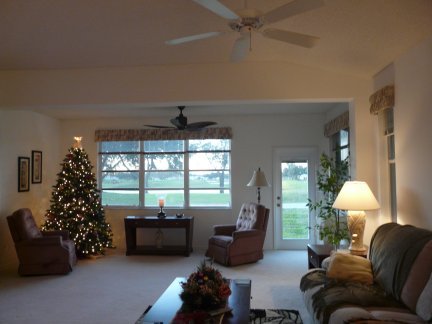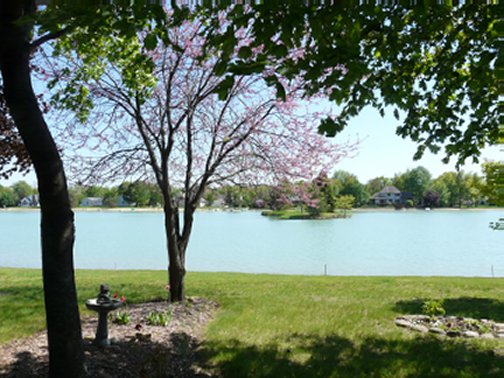Yup, I’d describe myself as an “old” techie geek.
When left Saginaw Valley State University in late 1981, we had only one computer on the campus and I got to use it once. But it wasn’t long after I started working at St. Mary’s Medical Center in Saginaw, that they got me my first computer to use.
Early computers had no hard drive, the OS (operating system) was usually booted from one floppy disk, which was then removed and replaced by another one containing the application. Some machines using two disk drives (or one dual drive) allowed the user to leave the OS disk in place and simply change the application disks as needed, or to copy data from one floppy to another. That’s the kind of computers we had to begin with. When our 30 megabyte hard drive was installed, the technician told us we’d “never fill it up.”
By the mid 1980’s I got my first “home” computer. It had a 30 megabyte hard drive, a 5 inch “floppy drive” and an “amber” monitor. It ran IBM’s Dos 1.1. I was “state of the art.”
Following that first off-brand computer, I found a used IBM, then a Dell, then I had one built for me, then an HP laptop, followed by a Sony Vaio and now another Sony Vaio. Each one was faster with a bigger hard drive. The same was true of my “work computers.” Because I was responsible for more and more data, my computer was always the best that was available, and I tried to stay abreast at home too.
I ran only two main programs: Lotus 1-2-3 (versions 1.0-3.0) started me out. I also learned Symphony which was by Lotus but it had database features built in. For word processing, we started with a free program until we up-graded to Word Perfect which was wonderful. With Lotus 1-2-3 and Word Perfect I was able to do most everything necessary but often slowly and with greater difficulty. Nevertheless, it was my area of expertise and I learned to “write programs” although I had no computer background. I used the “macro” feature of Symphony to write the first scheduling program for our hospital. I was able to “think through” to create solutions for which I received some notoriety (two awards through the Lotus magazine for winning national competitions solving computer “problems” with macros.
Just how do today’s speeds and sizes of hard drives compare?
Here’s a chart:
The nearest binary number to 1,000 is 2^10 or 1,024; thus 1,024 bytes was named a Kilobyte. So, although a metric “kilo” equals 1,000 (e.g. one kilogram = 1,000 grams), a binary “Kilo” equals 1,024 (e.g. one Kilobyte = 1,024 bytes).
bit = 1 bit
byte = 8 bits
Kilobyte = 1024 bytes
Megabyte = 1024 kilobytes
Gigabyte = 1024 megabytes
Terabyte = 1024 gigabytes
Petabyte = 1,048,576 gigabytes Kbr>
Exabyte = 1,073,741,824 gigabytes
Zettabyte = 1,099,511,627,776 gigabytes
I remember what an up-grade it was when we got our first HD 3 1/2 inch diskettes which held 2MB!
If you look at the comparative chart above, you can do the math and figure that the first computers were incredibly limited in their capacity.
I now have a thumb drive that holds 4 gigabyte. If I figured correctly that’s more than 136 times more than my 30 MB computer and my thumb drive doesn’t weigh an ounce.)
I remember the historic days when Dos came in 1.0 and 1.1 versions, when Excel and Word hadn’t been invented, when “Windows” didn’t exist, and we’d go on a break while our computer ran computations because they were so slow.
I’m an old “techie geek.” and proud of it!
 John installed one of our two new ceiling fans today. The other one will be installed tomorrow.
John installed one of our two new ceiling fans today. The other one will be installed tomorrow.  I’m a person who vowed never to have an artificial tree, but my allergies have gotten so bad and, with John’s lung condition, a real tree (complete with molds and fungi) would not be wise.
I’m a person who vowed never to have an artificial tree, but my allergies have gotten so bad and, with John’s lung condition, a real tree (complete with molds and fungi) would not be wise. When we arrived yesterday and opened the door from our living room toward the golf course, here’s what we saw. We’d planted a small flowerless poinsettia last year. It had been a luncheon centerpiece and door prize in about a 4″ pot. This year it’s magnificant. What a lovely Christmas-y greeting.
When we arrived yesterday and opened the door from our living room toward the golf course, here’s what we saw. We’d planted a small flowerless poinsettia last year. It had been a luncheon centerpiece and door prize in about a 4″ pot. This year it’s magnificant. What a lovely Christmas-y greeting. 


